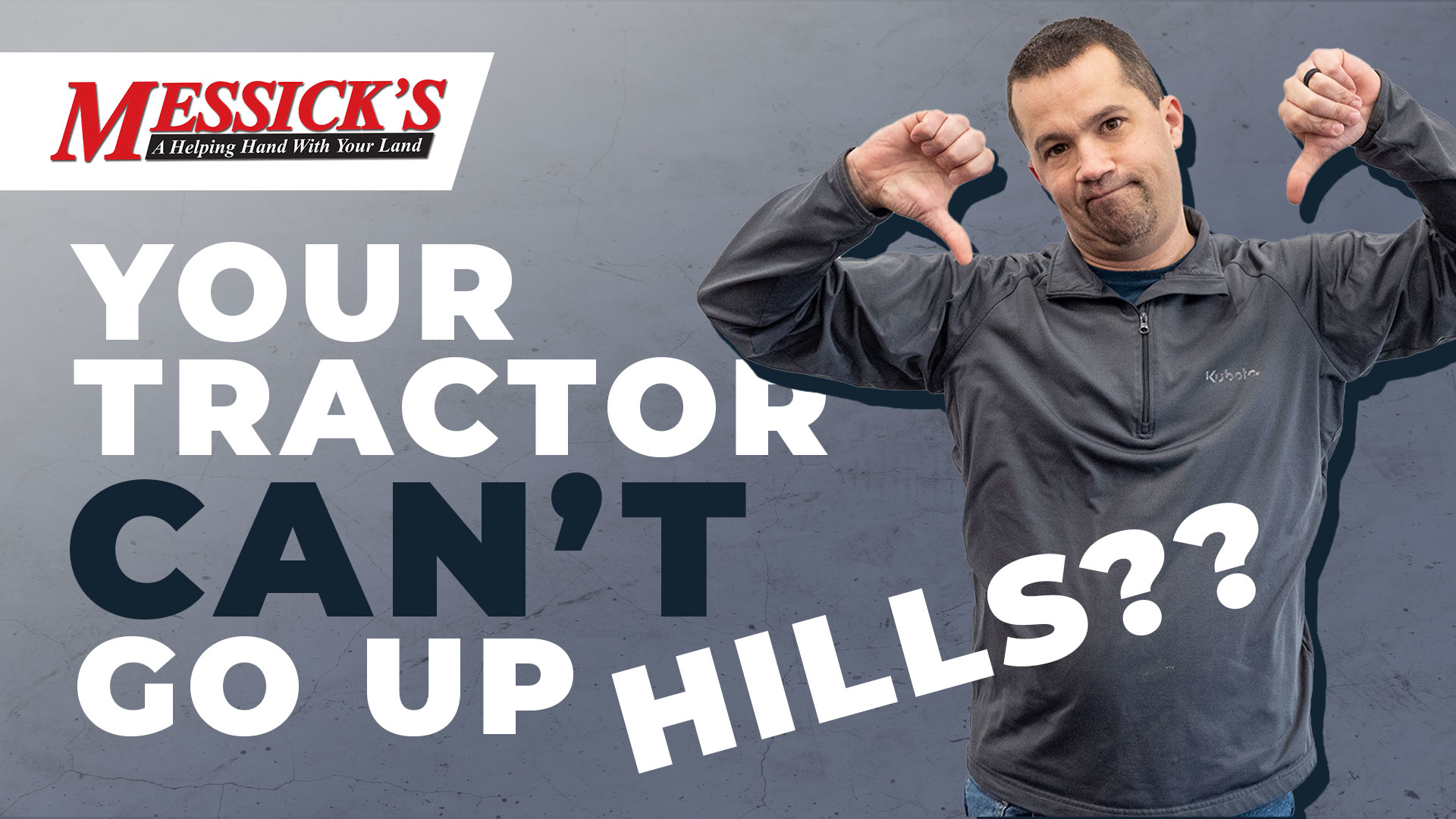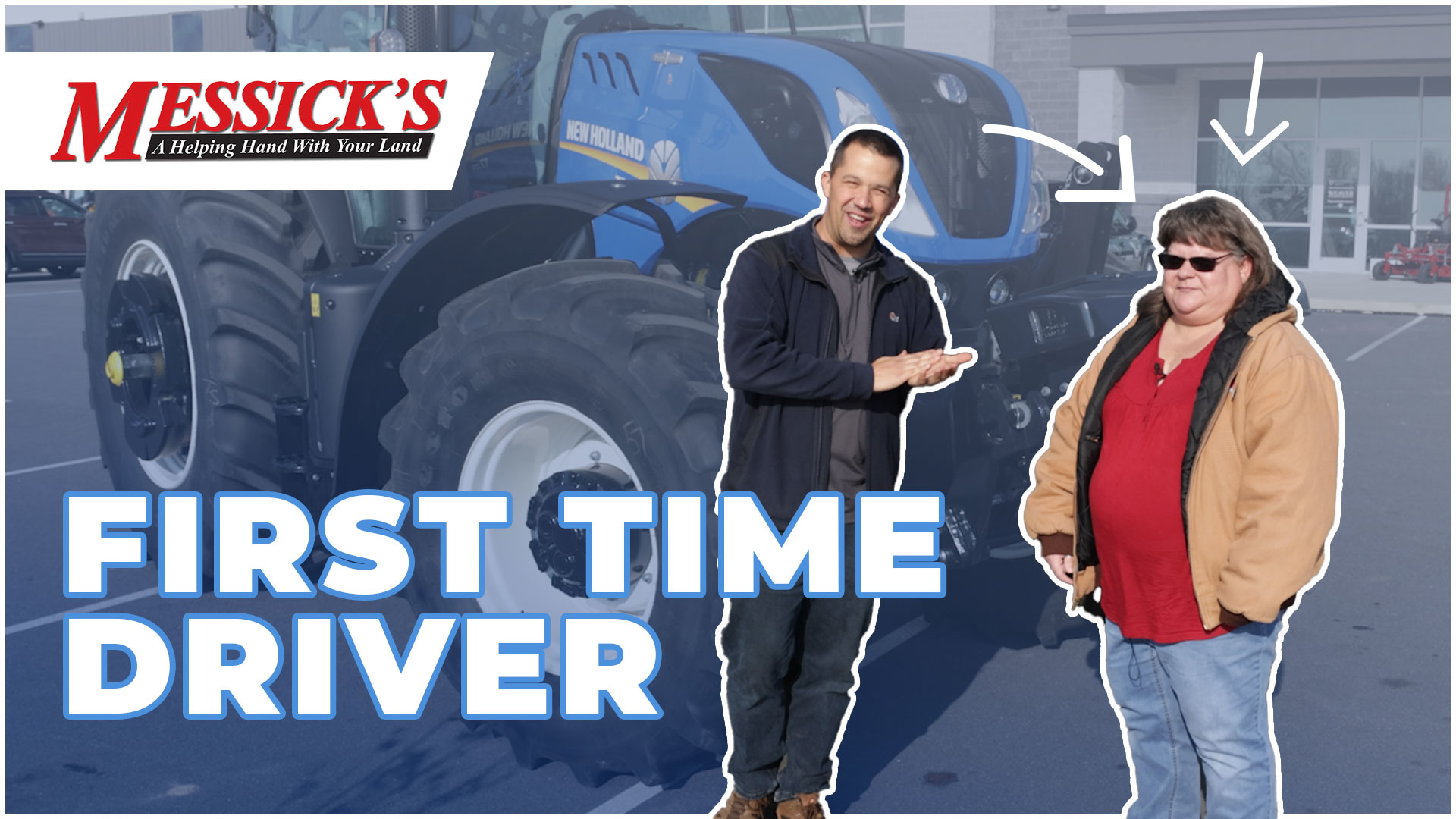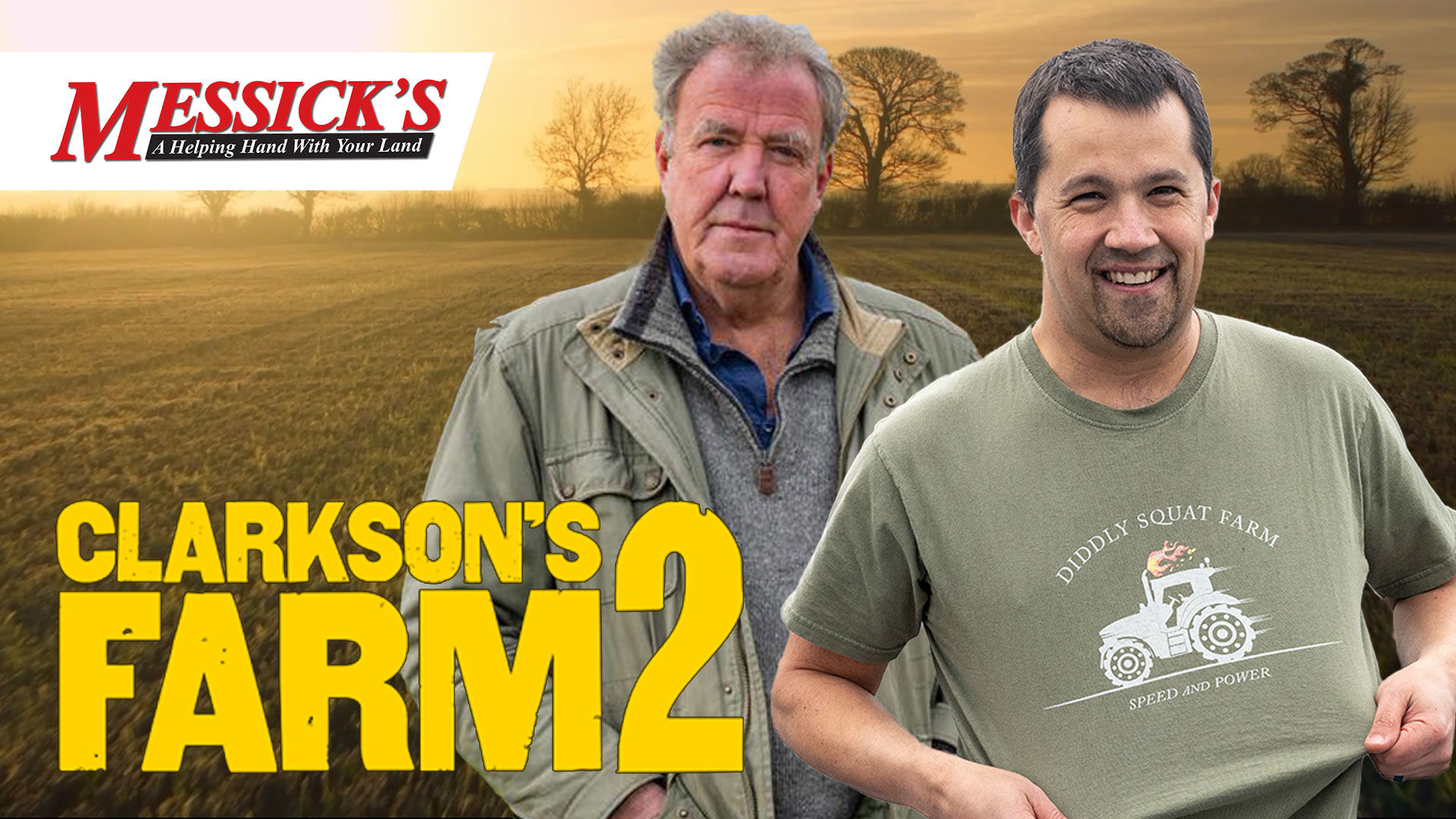Mower blade differences. Which ones work best
Tags : educational | hustler-landing | landpride | land-pride-landing | mtd-landing | woods-landing |Neil from Messick's here to discuss mower blades with you today. You may not actually realize it, but there are very many times multiple blades that can go onto your piece of equipment. Whether you have a zero-turn mower or a three-point finish mower or a flail, these options can have big differences in the performance of your mower and how it cuts. I've walked around our parts department here. If you're unaware, we sell parts for all kinds of different equipment.
It's one of the things that we're the best at and very proud of. I'm going to show you some of the different blades here that are in our bins and discuss a little bit what their different applications are.
I'm going to take each blade here that we pulled out of the bin and talk about its attributes and its different applications. You're going to hear the word lift used a lot here today.
These blades are going to have different amounts of curvature here at the end that determine how much vacuum they have when swinging across the ground. You have a fan effect as these things spin, that's going to help stand that grass up. Now, many people make the assumption that more lift is always better. Why wouldn't you want to stand the grass up more? As you can see here, there's actually cases where the lift isn't a positive. This right here is a low-lift blade and it has a very specific use.
If you don't want to be pulling a lot of air up off the ground, say you're cutting in sandy environments, you live in a beach area, you're in the dry South, low-lift blades can be preferred because they don't pull as much dirt and debris up off the ground. If you have sandy and rocky soils, all that dirt that's swirling around down there is wearing off the paint, it's slowly wearing away the metal as it's being blown around. It can also dull your blades. These blades have a little bit of an edge on the end here and as they're swinging around through all that dirt, that can really dull the blades very, very quickly.
A low-lift blade is going to still go around. It's still going to cut the grass, but it's not going to pick all of that dirt up off the ground. The other thing it's going to do too is cut and then get rid of that grass as quickly as possible. It's not going to swirl it around as much underneath the deck because you don't have the same amount of airflow. It is the best blade for cutting really thick and heavy grasses because you're going to cut it and discharge it quickly without swirling it around and cutting it multiple times like you can do with a higher lift blade.
In the middle of the spectrum here we have this, which is a medium-lift blade, but you're going to notice this serration, these notches here on the backside of the blade. Now this is not your cutting surface. This is back on that winged surface there that's creating that airflow. These notches are going to create not as much lift as what a solid surface would be, but the thinking is that the extra edges and stuff that are along here are going to help to cut that grass as this swings around.
These are sometimes called gator blades or extreme blades. There's a lot of different names for these things out here, but it's all going to use that same basic principle. These are going to be a little bit more horsepower efficient because of that notch. Again, we're not creating quite as much lift, but we have that little bit of extra cutting surface there on the backside of the blade to hopefully mulch those clippings a little bit more.
Our next two blades that we're going to look at are both high-lift blades of two different styles. This is a high lift. You can see the dramatic curve here at the end that's going to create that vacuum, that fan effect, to stand the grass up. Having this notch here on the backside helps it be a little bit more horsepower efficient. Most of our manufacturers are going to say that a blade like this is the best for say 80% of your grass conditions.
The other alternative that we'll see a lot of is this Kubota blade here. This is a very thick, very heavy-duty blade, but you're going to notice that it's continuously lifting the whole way across. A blade like this because of its weight and because of the heavy fan effect that you're going to have there does take the most horsepower to run, but it's going to be a very heavy-duty blade, a very long-lasting blade because of the amount of iron that's in this, you can see that dramatic high lift effect there.
Now, what are the positives of the high lift? We talked about the negative sides, the things that you could pick up off the ground, but what all are you doing with that airflow? By creating that extra vacuum, you're spinning the grass around the inside the deck more. The blade has more rotations around to cut it and trim those clippings a little bit more. You're standing the grass up more effectively after all your front tires have probably run over it already. The fan effect here from the blades helps to stand that back up again.
Very importantly, if you're operating a bagger on your mower deck, you need the extra airflow coming off of these high lift blades to be able to push the grass back and up the tube so they're important in that application. Those things out of the way, there's several other types of blades that we would have here and you can see some construction differences between them. These are flail knives right here and they're sharpened flail knives.
They have a really sharp edge on the front edge of them here. They're going to do a really nice job of cutting very cleanly, but sharp edges like this don't last long. You're going to wear really quickly again by hitting the ground, digging through dirt, just by cutting through the debris all day long, they're going to wear out. These are considered consumable items. We're going to sell them by the dozens to many people that have flail mowers because they need to be replaced regularly in order to remain sharp.
Not all flail mowers are made to be sharp. This is also a flail knife. You'll see the same shape right here, but the leading edge on here is just a tapered angle. It's not sharp at all. These are made to cut more just by beating the living date lights out of things as they spin around. This heavy-duty knife is going to mulch light wood and branches and that stuff as it comes across it, but it's not a grass knife like this other one with the sharpened edge is. Also in our bins here are going to be these sickle bar knives.
These are unique. You're going to find these mostly on farm-related machinery, although some people do use small sickle bars behind their tractors. This sharp knife is going to rotate back and forth and cut grass as it goes and it usually sits inside of some guard that as it oscillates back and forth, the guard holds the material for the knife to slide across and cut it. It does create a nice clean cut as it goes, but these knives again are replacement items.
Just like you got to replace mower blades over time, these knives need to be replaced also. This one right here I thought was interesting. You can see a traditional mower blade, but this one is specifically off of a Woods three-point hitch finish mower. You'll notice how little lift this has. These finished mowers are often used for pulling out and cutting really thick and heavy grass, maybe even getting out as some pastures.
That lift right there you can see is very specifically made not to mulch that grass up more than it needs to. It's for a rear discharge finish mower where it's going to cut that grass, throw it out the back as quickly as possible and continue moving on so that this thing can digest as much material as it can manage. Also from companies like Woods and Bush Hog and Land Pride, you get these monsters.
This is a rotary cutter blade. Something that's made to go out and can hit something that's two to three inches around and take it off. You're going to notice that that edge right there is not sharp. It's made to hit things with force, but this blade here probably weighs 8 or 9 pounds in and of itself. You can imagine the amount of damage that this can do if it strikes a piece of wood.
One question that we're often asked is, who is the best manufacturer of blades? Is a blade that has a little bit of extra technology in it somehow able to cut better than maybe the blades that may have come on your machine. I've always been really impressed by interacting with the various mower companies that we do when it comes to seeing the extent that they go to when testing and developing the blades that go onto their machine.
They don't just go to a generic blade company and buy whatever off the shelf and stick it down there. They're doing a lot of testing and design and development in order to make sure that they have a blade that works as well as they can on their particular machine because they want to have a product that cuts as well as possible. When we see people jump between say, a OEM or an aftermarket blade, I do feel like sometime there's some placebo effect in there of always being impressed by the latest thing that we've put on.
Anytime that you take off a dull blade and put on a sharp one, even if it's not the ideal sharp one for your piece of equipment, you're going to be impressed by the way that it cuts, right? Sometimes I feel like there's an impression given to different brands of blades that, oh, that's better than the OEM one that was on there, but it was because it was sharper and maybe sometimes the one that was intended for your machine might be the best one for it.
The mower companies consider these consumable items and for that reason, they do watch their pricing. The blades that we sell, even the OEM ones for your machine are oftentimes the best value for your money when it comes to say, construction and price, but we do offer a lot of different options here. If you are shopping for parts for your machine, you got a mower deck that's worn out, you need some blades for it.
If the application that you have for your mower, whether it's that sandy soil or the horsepower demand that you're putting on it, or that thick and heavy grass calls for a different blade than what you've got down there, we've got a fantastic crew of parts people down here that can help fix you up with the right stuff. Shopping for a piece of equipment and we can help or if you have parts of service needs for a machine you've already got, give us a call at Messick's. We're available at 802-222-3373 or online at messicks.com.
More Articles

It is exciting to imagine what can be accomplished with your tractor, but why does it struggle when you need it to climb a hill?

Big tractors can be intimidating, but some models are surprisingly easy to drive. We invite Shelby, one of our receptionists, to see how she does behind the wheel of a New Holland T7.270 with Auto Command (CVT Transmission).

Who is Jeremy Clarkson, why is he farming, and what impact does this have on the global agriculture industry?










